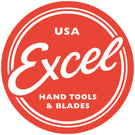The Art of Woodworking: Choosing the Best Tools for Your Project
Woodworking is an art that comes to life with precision, creativity, and the right tools. Among the essential items in a woodworker’s toolkit is the utility knife. This mighty tool is a versatile companion for scoring, shaving, and even marking measurements. When it comes to choosing the best utility knife for woodworking, you should consider blade sharpness, handle comfort, and overall durability. After all, a polished craft hinges on seamless cuts and effortless handling.
Understanding the Different Types of Woodworking Tools
Choosing the right woodworking tools is crucial for efficiency, accuracy, and safety. They range from simple hand tools to sophisticated specialty tools, each designed for specific tasks.
Hand Tools
- Saws: Essential for cutting wood, with varieties like hand saws for rough cuts and backsaws for fine joinery.
- Chisels: Used for carving or cutting a hard material such as wood; come in various shapes and sizes.
- Planes: Ideal for smoothing and shaping wood, with options from block planes to smooth planes.
Power Tools
- Drills: Power drills are indispensable for making precise holes and come with a range of bits for different functions.
- Sanders: They smooth out wood surfaces, with belt sanders for large areas and orbital sanders for finer work.
- Routers: Great for creating profiles on wood edges, hollowing out an area, and much more.
Specialty Tools
- Dovetail Jigs: A must for perfect dovetail joints, a hallmark of fine woodworking.
- Spindle Sanders: These sanders are used for smoothing out curves and intricate shapes that other sanders can’t reach.
Evaluating the Specific Needs of Your Woodworking Project
When selecting a utility knife for a woodworking project, consider the task’s specifics to ensure you have the ideal tool for the job. The size and complexity of a woodworking project play a pivotal role in determining the right utility knife. A large, intricate project may require a knife with a longer handle for better grip and control. In contrast, smaller projects might be best tackled with a knife that offers more precision.
Setting a Budget and Prioritizing Tool Purchases
Before splashing out on every shiny piece of equipment, woodworkers should list all the tools they need and distinguish essentials from desirables. Essentials are the tools required for basic operations such as cutting, shaping, and joining wood. Nice-to-have items might include specialized tools that offer convenience but aren’t critical.
Woodworkers need to also evaluate their tools’ longevity. Investing in high-quality tools, such as steel utility knives from reputable brands (like Excel Blades) or durable power tools, may cost more initially but provide reliability and long-term performance. Conversely, if you’re looking for a short-term solution or have budget constraints, you can opt for inexpensive utility knives or generic hand tools, which may serve immediate needs but could wear out or become obsolete more quickly.
Safety Considerations and Maintenance Tips
Understanding the importance of handling utility knives with care is essential for woodworking enthusiasts. For starters, always wear safety gloves and goggles when working with utility knives, as they are exceedingly sharp and prone to causing injuries if they slip. Furthermore, when handling the knife, it’s essential to maintain a firm grip and cut away from your body. If the knife has a locking mechanism, be sure to engage it for added safety.
Maintaining and sharpening your tools is paramount for optimal performance. After each use, it’s advisable to clean the knife thoroughly to prevent the accumulation of residue. A simple wash with soapy water followed by thorough drying should suffice. When it comes to tool storage, keep your knives in a dry place to prevent rust. Consider using a knife sheath or a toolbox to safeguard the blades and minimize the risk of accidents. Organizational habits are also crucial. Label storage spaces for quick access and regularly inspect them to ensure they remain safe and well-organized.
Final Tips for Choosing the Best Woodworking Tools for Your Project
Woodworkers should remember that the best tool is one that fits their specific project needs and safety requirements. It’s about finding the right balance between functionality, comfort, and safety. Whether you’re a seasoned carpenter or a weekend warrior, having a suitable Excel Blades utility knife in your toolkit can be the key to enhancing the quality of your work and maximizing your enjoyment of the woodworking process. Remember, the best tool is the one that complements your craft and elevates your woodworking experience!








